
ANNALS OF NUCLEAR ENERGY
Scope & Guideline
Innovating Solutions for Tomorrow's Energy Needs
Introduction
Aims and Scopes
- Nuclear Reactor Physics and Design:
Research in this area includes the study of neutron behavior, reactor dynamics, and the design of various reactor types such as pressurized water reactors (PWRs), sodium-cooled fast reactors (SFRs), and molten salt reactors. This encompasses both steady-state and transient analyses. - Thermal-Hydraulics and Safety Analysis:
This scope focuses on the thermal-hydraulic behavior of nuclear systems, including heat transfer, fluid dynamics, and the safety implications of various operational scenarios, particularly during accidents. - Fuel Cycle and Waste Management:
Research related to the lifecycle of nuclear fuel, from production and utilization to disposal and recycling, including studies on accident-tolerant fuels and transmutation of long-lived isotopes. - Nuclear Data and Computational Methods:
This area emphasizes the development and validation of nuclear data libraries, Monte Carlo simulations, and advanced computational methods for neutron transport and reactor analysis. - Innovative Reactor Technologies:
Exploration of advanced reactor designs and concepts, including small modular reactors (SMRs), hybrid systems, and innovative cooling methods that enhance safety and efficiency. - Environmental and Radiological Impact Studies:
Research on the environmental implications of nuclear energy, including radiological assessments, accident consequence analysis, and the development of mitigation strategies for potential releases.
Trending and Emerging
- Artificial Intelligence and Machine Learning Applications:
There has been a significant increase in the application of AI and machine learning techniques for reactor monitoring, predictive maintenance, and optimization of reactor operations. - Advanced Materials for Nuclear Applications:
Research on accident-tolerant fuels and innovative materials, such as advanced ceramic and composite materials, is gaining momentum, reflecting the industry's focus on enhancing reactor resilience. - Hybrid and Integrated Energy Systems:
The integration of nuclear power with renewable energy sources and the development of hybrid reactor systems are emerging themes, highlighting the push for sustainable energy solutions. - Digital Twin and Real-Time Monitoring Technologies:
The implementation of digital twins for real-time monitoring and predictive analysis of reactor performance is becoming increasingly prevalent, driven by advancements in sensor technology and data analytics. - Environmental Impact and Sustainability Studies:
Research focusing on the environmental impacts of nuclear energy, including waste management and lifecycle assessments, is trending as stakeholders emphasize sustainability in nuclear energy production.
Declining or Waning
- Classical Reactor Technologies:
Research focused on traditional PWR and BWR technologies has seen reduced emphasis, possibly due to the increasing interest in advanced reactor designs and alternative cooling methods. - Conventional Safety Analysis Techniques:
The reliance on traditional deterministic safety analysis methods is waning, as newer probabilistic risk assessment approaches and advanced computational simulations gain traction. - Basic Neutron Physics Studies:
While foundational studies in neutron physics are important, there has been a noticeable decrease in publications that focus solely on basic neutron interaction theories, as applications and advanced modeling take precedence. - Single-phase Flow Studies:
Research specifically targeting single-phase flow dynamics in nuclear systems appears to be declining, as the focus shifts towards complex multi-phase flow interactions and their implications for reactor safety.
Similar Journals
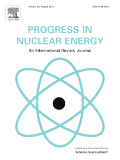
Progress in Nuclear Energy
Shaping the future of energy through rigorous research.Progress in Nuclear Energy is a premier academic journal published by Pergamon-Elsevier Science Ltd, dedicated to advancing the field of nuclear energy and its applications. With an ISSN of 0149-1970 and an E-ISSN of 1878-4224, this journal has made significant contributions to the scholarly community since its inception in 1977. The journal is recognized for its rigorous peer-reviewed research and has achieved impressive standings in multiple categories, including being ranked Q1 in Nuclear Energy and Engineering and Safety, Risk, Reliability and Quality for 2023. Its impact factor highlights the relevance and influence of the published work within the field. Researchers, professionals, and students seeking a comprehensive overview of current developments will find valuable insights in its pages. Covering a broad time span of publishing years, from 1977 through 2024, Progress in Nuclear Energy remains an essential resource for those involved in the energy sector, particularly in designing sustainable and safe nuclear technologies.

NUCLEAR ENGINEERING AND DESIGN
Elevating Standards in Nuclear Engineering ResearchNUCLEAR ENGINEERING AND DESIGN is a prestigious journal published by Elsevier Science SA, which has been contributing to the field of nuclear science since 1965. With ISSN 0029-5493 and E-ISSN 1872-759X, it serves as a vital platform for researchers, professionals, and students in areas including nuclear energy, safety, mechanical engineering, and waste management. This journal is highly regarded, reflected in its impressive Q1 status in categories such as Nuclear Energy and Engineering and Safety, Risk, Reliability and Quality, as well as its ranking within the top quartiles of other related fields according to the 2023 category quartiles. Though not an open-access journal, it provides comprehensive insights into cutting-edge research and innovative practices in nuclear engineering, making it an essential resource for advancing knowledge and applications in this critical sector. With a forward-looking scope extending to 2024, NUCLEAR ENGINEERING AND DESIGN continues to influence developments in nuclear technology and safety protocols worldwide.

Problems of Atomic Science and Technology
Unveiling the Future of Nuclear Engineering.Problems of Atomic Science and Technology is a leading journal in the realm of nuclear physics and technology, published by the esteemed Kharkov Institute of Physics and Technology. With an ISSN of 1562-6016, this journal is dedicated to disseminating high-quality research and advancements in atomic sciences, contributing significantly to both academic and practical applications in the field. Although not an open access publication, it ensures rigorous peer review standards to maintain the integrity and relevance of cited works. The journal seeks to provide a vital platform for researchers, professionals, and students who are engaged in the exploration of atomic phenomena, nuclear engineering, and associated technologies. Published from Kharkov, Ukraine, the journal also serves as a bridge for international collaboration and innovation, making it indispensable for anyone looking to stay at the forefront of atomic science research.

ATW-INTERNATIONAL JOURNAL FOR NUCLEAR POWER
Illuminating Insights in Nuclear Power ApplicationsATW - International Journal for Nuclear Power is a premier journal dedicated to advancing the understanding and application of nuclear technology within the energy sector. Published by INFORUM Verlags-Verwaltungsgesellschaft mbH, this esteemed publication provides a platform for researchers, professionals, and students to disseminate cutting-edge research, practical applications, and critical analyses related to nuclear power generation. Although it has discontinued coverage in Scopus since 2012, its long-standing contributions to the field since 1996 underscore its significance and relevance. The journal aims to bridge the gap between theoretical insights and real-world applications, ensuring that stakeholders are well-informed on the latest trends, safety protocols, and innovations in nuclear power. With a commitment to fostering knowledge dissemination and collaboration, ATW continues to be an essential resource for anyone involved in the nuclear energy landscape.
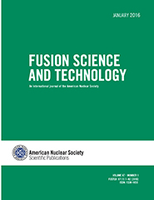
FUSION SCIENCE AND TECHNOLOGY
Advancing sustainable energy through innovative fusion research.FUSION SCIENCE AND TECHNOLOGY is a leading peer-reviewed journal published by Taylor & Francis Inc., dedicated to the advancement of knowledge in the fields of nuclear science, engineering, and fusion technology. With an impact factor that reflects its growing significance, this journal provides a platform for innovative research that addresses the challenges and opportunities within Civil and Structural Engineering, Materials Science, Mechanical Engineering, and Nuclear Energy and Engineering. Its open access option facilitates wider dissemination of groundbreaking research, enhancing visibility and accessibility for researchers, professionals, and students alike. As a member of the Q2 and Q3 Quartiles across various categories—demonstrating its reputable standing among peers—the journal plays a crucial role in fostering collaboration and sharing the latest scientific discoveries in fusion and related technologies from 2001 until 2024. This makes it an essential resource for anyone engaged in the multidisciplinary aspects of fusion science, contributing to the development of sustainable energy solutions.

THERMAL ENGINEERING
Leading the Charge in Energy and Thermal ResearchTHERMAL ENGINEERING is a premier journal dedicated to advancing the field of thermal engineering, with particular importance in the domains of Energy Engineering, Nuclear Energy, and Power Technology. Published by PLEIADES PUBLISHING INC, this esteemed journal has been providing significant scholarly contributions since its inception, with its converged years spanning from 1970 to 2024. Though currently non-open access, the journal presents a unique avenue for researchers, professionals, and students to explore groundbreaking research and innovative solutions related to energy systems and thermal processes. With a notable impact factor and positioned in the Q3 quartile for both Energy Engineering and Nuclear Energy, THERMAL ENGINEERING ensures the dissemination of high-quality research with a global reach, making it an essential resource for those looking to stay at the forefront of essential energy technologies and engineering advancements.

Nuclear Physics and Atomic Energy
Exploring the frontiers of atomic science.Nuclear Physics and Atomic Energy is a reputable open-access journal that focuses on the fields of nuclear physics and high-energy physics, providing a forum for researchers, professionals, and students to share their findings and advancements. Published by the Institute of Nuclear Research, National Academy of Sciences of Ukraine, this journal has been committed to disseminating knowledge since its inception in 2006, ensuring that scientific advancements remain accessible to a global audience. With an ISSN of 1818-331X and an E-ISSN of 2074-0565, the journal features a diverse array of articles that span the continued exploration and application of nuclear phenomena. Although currently categorized in the Q4 quartile for Nuclear and High Energy Physics in 2023, the journal is steadily working towards increasing its impact and engagement within the academic community. With a Scopus rank of #74 out of 87 in its category, it serves as a valuable resource for advancing crucial research in a vital scientific area. Researchers are encouraged to contribute their innovative studies to foster collaboration and knowledge sharing in this dynamic field.
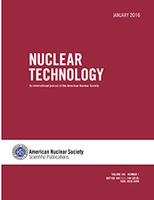
NUCLEAR TECHNOLOGY
Transforming Knowledge into Nuclear SolutionsNUCLEAR TECHNOLOGY is a leading academic journal published by TAYLOR & FRANCIS INC, dedicated to the expansive field of nuclear science and engineering. With a robust ISSN of 0029-5450 and an E-ISSN of 1943-7471, this journal provides invaluable insights and cutting-edge research from 1971 to 2024. Positioned in the esteemed Q2 category for Condensed Matter Physics, Nuclear and High Energy Physics, and Nuclear Energy and Engineering, it boasts respectable Scopus rankings, underscoring its impact and relevance within the academic community. NUCLEAR TECHNOLOGY serves as a crucial platform for researchers, professionals, and students, fostering an exchange of knowledge that advances the understanding and application of nuclear technologies. While it operates on a subscription model, this journal remains a vital resource for those aiming to contribute to or stay at the forefront of developments in nuclear technology.
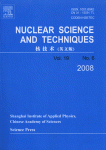
Nuclear Science and Techniques
Driving Progress in Nuclear Science and EngineeringNuclear Science and Techniques is a distinguished peer-reviewed journal published by Springer Singapore Pte Ltd, dedicated to advancing the fields of nuclear science and engineering. With an impressive impact factor reflected in its 2023 quartile rankings—Q2 in Nuclear and High Energy Physics and Q1 in Nuclear Energy and Engineering—the journal serves as a vital resource for researchers, professionals, and students alike. Covering a breadth of topics from nuclear physics to energy applications, it offers a platform for innovative research and developments in the nuclear domain. The journal, indexed under ISSN 1001-8042 and E-ISSN 2210-3147, aims to foster scientific exchange and collaboration within the community by publishing high-quality articles that contribute significantly to the field. Committed to maintaining an open-access ethos, it enhances visibility and accessibility of critical knowledge, making it an essential source for current insights and trends in nuclear science.
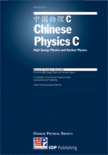
Chinese Physics C
Fostering Innovation in Experimental MethodologiesChinese Physics C is a premier, peer-reviewed journal published by IOP Publishing Ltd, dedicated to advancing knowledge in the fields of Astronomy and Astrophysics, Instrumentation, and Nuclear and High Energy Physics. With an impressive impact factor reflecting its standing in the Q1 quartile across multiple categories, this journal serves as a vital resource for researchers, professionals, and students seeking to engage with cutting-edge developments and experimental findings. Since its inception in 2008, Chinese Physics C has fostered significant collaborations and discussions within the global physics community, enabling easy access to high-quality research through its open access options. Operating from the United Kingdom with a commitment to excellence, this journal not only showcases high-impact papers but also encourages innovative methodologies and interdisciplinary approaches, solidifying its role as an essential platform for dissemination and dialogue in the rapidly evolving landscape of physics.